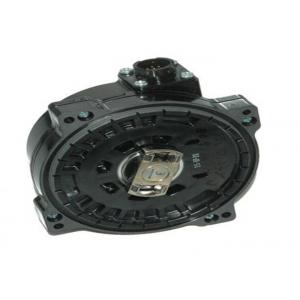20 Bit Yaskawa Ac Servo Motor Encoder , Yaskawa Absolute Encoder UTTAH B20FL
Add to Cart
Servo Motor Encoder Yaskawa Absolute Encoder UTTAH-B20FL For
SGMGV-44A3A6C 20 Bit
QUICK DETAILS
- Brand :Yaskawa
- Model :UTTAH-B20FL
- Place of Origin :Japan
DESCRIPTION
- Servo Motor Encoder
- Yaskawa Electric
Absolute Encoder
SPECIFITIONS
| Model Number | UTTAH-B20FL |
| Category | Internal encoders |
| Manufacturer | Yaskawa |
| Series | UT series Encoders for AC Servo and Spindle motors |
| Type | Absolute Encoder |
| Name of series | DG |
| Resolution | 20 Bit |
What is a differential line output?
Differential output refers to the fact that each channel has a
complement channel, i.e. Channel A and Channel A not. A
differential line driver is used to help increase noise immunity.
It also allows you to sink or source more current than a Totem-pole
output. A differential line driver will work with either a sinking
or sourcing circuit. It can also help in increasing the distance
that a signal is transmitted.
What is an open collector output?
An open collector output is an NPN transistor. An NPN transistor
allows the sinking of current to common. It can be thought of as a
switch that allows the circuit to be connected to common after the
load. This means that a source is required for the output to work.
A supply through a load must be connected to the output, otherwise
the NPN transistor is simply creating a path to common, (i.e., a
dry contact). Therefore, if you were to measure the voltage at the
output of an open collector that is not connected to some supply,
you would not see a change in voltage. The voltage should be
measured across the output load to determine if the open collector
is working properly
What is a Totem-pole output?
A Totem-pole output, sometimes referred to as a push-pull output,
is a bipolar output with active devices that are controlled such
that, as the resistance of one increases, the resistance of the
other decreases; so that according to the relative states of the
two active devices, the output voltage can swing between levels
approaching the two supply voltages. The term ‘totem-pole output,’
as commonly used, does not include three-state outputs.
What is a quadrature output?
Quadrature output refers to the use of two output channels (A and
B) separated by 90 degrees of phase shift. The fact that the
signals are 90 degrees out of phase allows a controller to
determine the direction of rotation, i.e. if channel A leads B then
the encoder is spinning one direction, if B leads A then the other.
See the channel timing charts for a graphical view of this concept.
Remember that each channel provides the rated PPR for each encoder.
For example: with a 100 PPR encoder, there are 100 pulses per
revolution from channel A, and 100 pulses from channel B. This is a
total of 200 pulses if your controller can count both channels (X2
logic). Some controllers can count the rising edge and the falling
edge of each pulse (on both channels) thereby increasing the
effective resolution by a factor of four (X4 logic), and counting
400 edges per revolution on a 100 PPR quadrature encoder. This
doesn’t mean that there are 400 pulses coming from a 100 PPR
quadrature encoder.
OTHER SUPERIOR PRODUCTS
| Yasakawa Motor, Driver SG- | Mitsubishi Motor HC-,HA- |
| Westinghouse Modules 1C-,5X- | Emerson VE-,KJ- |
| Honeywell TC-,TK- | GE Modules IC - |
| Fanuc motor A0- | Yokogawa transmitter EJA- |



